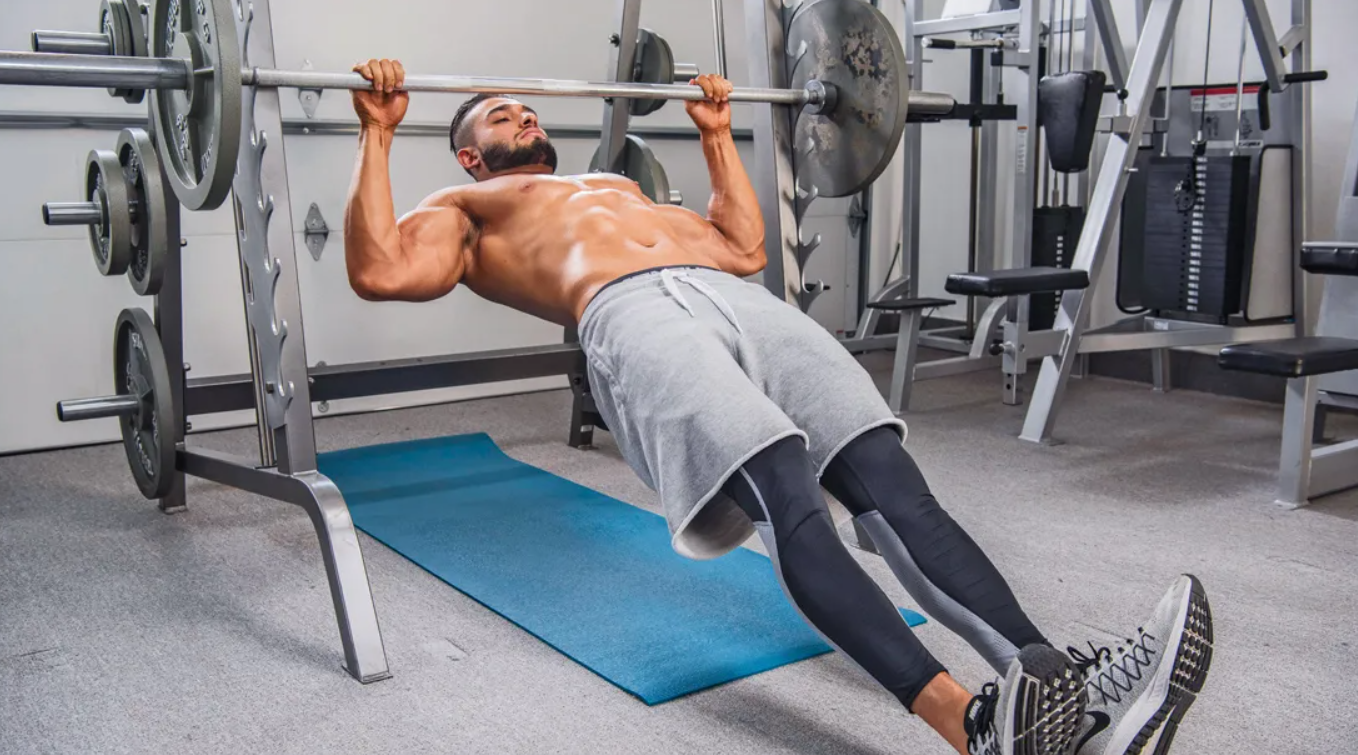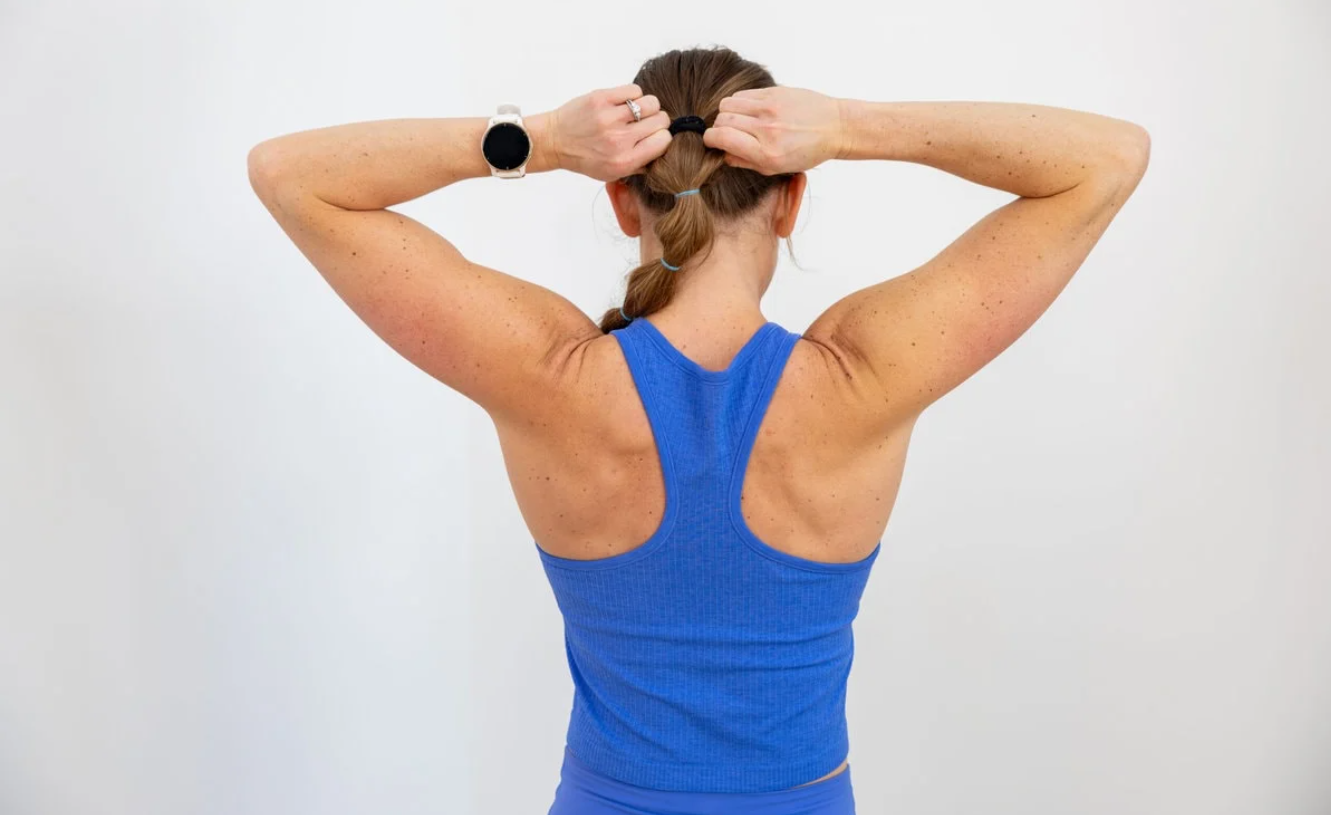When it comes to lower body strength and quad development, front squats are widely recognized for their effectiveness. The unique position of the barbell in a front squat creates an upright torso, challenging the quads, core, and upper back to stabilize the weight, which is essential for building lower body strength, enhancing functional fitness, and supporting proper posture. However, not everyone has access to a barbell, and some may face mobility limitations—such as restricted ankle, hip, or shoulder flexibility—that make front squats challenging, uncomfortable, or even unsafe. For others, specific joint or back sensitivities may require exercises with less strain on the spine or a modified range of motion.
Fortunately, numerous exercises can replicate the muscle activation and benefits of front squats, targeting the quads, glutes, and core without requiring a barbell. Whether you’re working out at a fully equipped gym or in the comfort of your home, you can achieve similar results by incorporating variations that challenge your muscles, improve stability, and build a balanced, strong lower body.
Below, we’ll discuss some of the best front squat alternatives, exploring why they’re beneficial, how they engage key muscle groups, and what makes them effective options for building strength and muscle definition in the legs and core.
What are the best alternatives to front squats for quad development?
To achieve similar gains in quad strength and stability without a barbell, consider these alternative exercises that mimic the front squat's benefits.
1. Goblet Squats: A Beginner-Friendly Front Squat Alternative
Goblet squats are performed with a dumbbell or kettlebell held close to the chest, making it a great entry-level alternative to front squats. They allow for a similar upright torso position, emphasizing quad activation and making the squat motion more manageable for beginners.
Benefits
Goblet squats offer quad-focused training with a safer, front-loaded weight. This setup challenges core stability and reinforces proper squat form, helping lifters master the movement without as much spinal load.
How to Perform
- Hold a dumbbell or kettlebell by the handle with both hands at chest level.
- Stand with feet shoulder-width apart, toes slightly pointed out.
- Lower into a squat while keeping your chest up, aiming for depth.
- Press through the heels to return to the starting position.
2. Zercher Squats: Challenging Your Core and Upper Back
Zercher squats involve holding a barbell in the crooks of your elbows, providing a front-loaded weight distribution similar to a front squat. This exercise challenges core stability and is highly effective for targeting the quads, upper back, and glutes.
Benefits
Zercher squats strengthen the upper back and core while maintaining an upright posture, crucial for quad activation. They also work well for individuals who struggle with the barbell front rack position.
How to Perform
- Place a barbell in the crooks of your elbows and secure it by clasping your hands together.
- Stand with feet shoulder-width apart and engage your core.
- Squat down until your thighs are parallel to the ground, maintaining an upright torso.
- Press through the heels to return to standing.
3. Hack Squats: Isolating Quads with Machine Assistance
Hack squats are performed on a hack squat machine, allowing for a controlled movement that emphasizes the quads. The machine provides back support, reducing the demand on core stability.
Benefits
This machine-based alternative isolates the quads effectively, making it ideal for targeting lower body strength with minimal involvement of the core. It’s suitable for people who want to focus on hypertrophy without balancing free weights.
How to Perform
- Position yourself on the hack squat machine with your back against the pad and shoulders secured.
- Lower yourself by bending your knees, keeping your feet planted.
- Press through the heels to return to the starting position.
How can I target similar muscle groups without using a barbell?
For those seeking a barbell-free workout, the following exercises can offer substantial quad and core engagement.
4. Dumbbell Front Squats: Improving Balance and Unilateral Strength
Dumbbell front squats mimic the front squat pattern by holding dumbbells at shoulder height. This variation is more accessible than the barbell version and encourages greater balance and control.
Benefits
Dumbbell front squats activate the quads and core while allowing for a more manageable, shoulder-friendly setup. They’re ideal for building unilateral strength and stability.
How to Perform
- Hold a dumbbell in each hand at shoulder height.
- Stand with feet hip-width apart, engage your core, and lower into a squat.
- Press through your feet to stand back up.
5. Kettlebell Front Squats: Enhancing Core Stability and Grip Strength
Similar to dumbbell front squats, kettlebell front squats involve holding kettlebells at shoulder height. The kettlebell grip adds an extra layer of core stability and grip strength.
Benefits
Kettlebell front squats enhance balance, core stability, and grip, making them a great full-body alternative to traditional front squats. They’re especially beneficial for improving grip and upper body endurance.
How to Perform
- Hold a kettlebell in each hand at shoulder level.
- Perform a squat, keeping your torso upright and engaging your core.
- Stand up by pressing through your feet.
6. Landmine Squats: A Joint-Friendly Alternative for Lower Back Issues
Using a landmine setup, this squat variation provides a fixed bar path, making it easier on the joints and lower back. The weight is held in front, similar to a goblet squat, creating an effective quad stimulus with added core engagement.
Benefits
Landmine squats offer a controlled, joint-friendly squat alternative that limits spinal loading, making them suitable for individuals with lower back concerns.
How to Perform
- Position the barbell in a landmine attachment or anchor it in a corner.
- Stand with feet shoulder-width apart, holding the barbell with both hands at chest level.
- Lower into a squat, keeping your chest upright.
- Push through your heels to return to standing.
Which exercises can replace front squats for those with limited mobility?
If limited mobility restricts your ability to perform traditional front squats, consider these alternatives to target similar muscles with greater ease.
7. Bulgarian Split Squats: Targeting Quads with Less Spinal Loading
Bulgarian split squats involve performing a lunge with the back foot elevated, focusing on one leg at a time. This setup enhances quad activation while reducing spinal load.
Benefits
This exercise develops balance, unilateral strength, and hip mobility. By working one leg at a time, you can address muscle imbalances effectively.
How to Perform
- Position one foot behind you on a bench or platform.
- Lower into a squat by bending your front knee, keeping your torso upright.
- Press through your front heel to return to the starting position.
8. Step-Ups: Building Unilateral Strength and Balance
Step-ups are a simple but effective way to target the quads and glutes. This exercise is highly accessible and can be done with dumbbells or a weighted vest.
Benefits
Step-ups are great for improving balance, stability, and unilateral leg strength, making them ideal for functional strength building.
How to Perform
- Stand in front of a bench or box, holding weights in each hand if desired.
- Step onto the bench with one foot, driving through the heel.
- Step down carefully and repeat on the other leg.
9. Leg Press: Focusing on Leg Muscles Without Upper Body Demands
The leg press machine allows you to target the quads, hamstrings, and glutes without needing to balance a barbell or activate the upper body significantly.
Benefits
The leg press isolates the lower body, making it a solid alternative for those with upper body limitations or discomfort with free weights.
How to Perform
- Position yourself on the leg press machine with your feet shoulder-width apart.
- Push the weight away by extending your legs, keeping your back flat against the pad.
- Lower the weight slowly, controlling the descent.
What are the best front squat alternatives for home workouts?
For home-based training, the following exercises require minimal equipment while delivering effective results.
10. Single-Arm Kettlebell Front Squats: Challenging Stability and Core Strength
By holding a kettlebell in one hand at shoulder height, single-arm kettlebell front squats add an asymmetrical load, challenging balance, stability, and core strength.
Benefits
This squat variation improves core engagement and unilateral stability, making it a powerful option for home workouts with minimal equipment.
How to Perform
- Hold a kettlebell in one hand at shoulder level.
- Squat down, keeping your torso upright and core braced.
- Push through your feet to return to the starting position.
11. Resistance Band Squats: Affordable and Portable Quad Builders
Resistance band squats use bands to create tension, making them an easy-to-use, portable option for home workouts.
Benefits
Resistance bands provide variable resistance, making them ideal for building lower body strength without heavy weights.
How to Perform
- Stand on a resistance band, holding the handles at shoulder height.
- Squat down while keeping your chest up.
- Return to standing by pressing against the band’s resistance.
How can I replicate the front rack position benefits without front squats?
For those who benefit from the front rack’s unique posture, the following exercises can simulate similar engagement.
12. Front Rack Lunges: Maintaining an Upright Posture While Working Legs
By holding weights in the front rack position, front rack lunges challenge the core, upper back, and legs in a way similar to front squats.
Benefits
This exercise maintains the upright posture essential for front squat benefits while targeting the quads and glutes.
How to Perform
- Hold dumbbells at shoulder height and step forward with one foot.
- Lower into a lunge, keeping your torso upright.
- Press through your front heel to stand back up.
Conclusion
Front squats are undeniably effective for building lower body and core strength, as they target the quads, glutes, and hamstrings while challenging the core and upper back. However, they’re not the only way to develop a strong, resilient lower body. By incorporating a variety of alternative exercises, you can achieve similar muscle activation, improve functional strength, and enhance mobility, while also addressing individual needs such as equipment limitations, joint sensitivities, or mobility restrictions. Each alternative exercise offers unique benefits, from improving balance and stability to emphasizing unilateral strength or reducing stress on the lower back, allowing you to tailor your workout to meet specific goals.
Whether you're looking to build quad strength, increase glute engagement, or reduce injury risks, these front squat alternatives can be a powerful addition to your routine. With so many options available, you can select the exercises that best align with your fitness goals, training experience, and equipment accessibility. This versatility allows you to create a well-rounded program that promotes balanced lower body development and reduces overuse injuries associated with repetitive barbell squats. Incorporating a variety of squat alternatives not only enhances your lower body strength but also contributes to a more adaptable and resilient body capable of handling a wide range of activities and challenges.










